In 2018, I shared my initial foray into podcasting, capturing my excitement and the basics I had learned. Now, over six years later, I find myself reflecting on how far this journey has taken me and how much both I and the podcasting world have evolved.
When I started, podcasting was just another way to share my thoughts and expertise, blending my passion for sound with the art of storytelling. The industry was still burgeoning, and my experiences in music production and radio gave me a solid foundation. Little did I know, this would be the beginning of a thriving venture, connecting with listeners worldwide and opening doors I hadn’t imagined.
The landscape of podcasting has transformed significantly. With the rise of new platforms, innovative recording technologies, and a global increase in podcast listenership, the game has changed. I’ve grown with it, continuously updating my tools, refining my techniques, and expanding my reach.
One of the highlights of this journey has been the recognition my podcast has received. Being nominated for an NAACP Image Award was a tremendous honor, validating the hard work and dedication I’ve poured into this project. It’s moments like these that remind me of the impact podcasting can have and the connections it can create.
Today, I’m not just a podcaster but a seasoned creator who has navigated the ups and downs of this medium. My show has not only gained recognition but also influenced and inspired many. The insights and lessons learned have been invaluable, and it’s time to share an updated perspective.
With this updated list, it’s important to note how fast technology moves. Some of the tools and services I rely on today weren’t even available back then. This post aims to provide you with a fresh look at the essentials of starting and running a successful podcast. From cutting-edge equipment to efficient services and effective strategies, I’ll walk you through what works best in today’s dynamic podcasting environment. Whether you’re a newbie or a seasoned podcaster looking for new tips, these recommendations will help you elevate your game.
Let’s explore the current best practices and tools that can set you on the path to podcasting success.
The Importance of Quality Audio
One thing remains constant: the significance of good audio quality. People will forgive lower quality video more readily than they will poor audio. It’s essential not just to sound good but to ensure the recording of your voice is crisp and clear. Investing in quality equipment can make a substantial difference in how your audience perceives your content.
My Equipment Recommendations
When it comes to equipment, I’ve had the privilege of trying out various tools and finding what works best for different scenarios. Here are my updated recommendations:
Microphones
- Shure SM7B: This is my go-to for vocal recording. Its design specifically caters to spoken word, making it ideal for podcasts. The audio quality is exceptional, and it has a visually appealing, low-profile look that works great on camera. [LINK]
- Rode NT1: A versatile studio microphone that excels in capturing both vocals and acoustic instruments. Its durability and sound quality have made it a staple in my setup for years. [LINK]
- Sennheiser E835: Used primarily at Lucille’s, my jazz club, this microphone is rugged and perfect for live performances and in-person interviews. It can withstand rough handling and still deliver excellent sound. [LINK]
Recording Software
- Apple Logic Pro: This powerful tool is my choice for editing. It’s designed for comprehensive audio production, from music creation to podcast editing. Its one-time purchase model is a plus in a subscription-heavy market. [LINK]
- Adobe Audition: Part of the Adobe Creative Cloud, it’s a robust option for recording and editing. While I don’t personally prefer it, many find it intuitive and reliable. [LINK]
- Audacity: An excellent free option for beginners, offering basic but effective recording and editing capabilities. [LINK]
External Recorders
- Zoom H6: This six-track portable recorder is indispensable for interviews. It allows individual volume control for multiple tracks, ensuring each voice is captured perfectly. [LINK]
- Rodecaster Pro: A comprehensive podcast studio in a single device. Its programmable sound pads and Bluetooth capabilities make it incredibly versatile for live recording sessions. [LINK]
- Tascam DR-05: Compact and affordable, with built-in stereo microphones, making it ideal for beginners or those on a budget. [LINK]
Audio Interfaces
- Focusrite Scarlett 2i2: A reliable and popular interface that converts analog signals to digital, improving sound quality and facilitating seamless recording. [LINK]
- Blue Yeti: This USB microphone is perfect for quick recordings. It’s a plug-and-play device that eliminates the need for an interface, making it convenient for on-the-fly recording sessions. [LINK]
Storage Solutions
Reliable storage is crucial. I use the LaCie Rugged USB-C Drive for its durability and speed. Cloud storage options like Dropbox and Google Drive are also essential for version control, automatic backups, and easy access across devices. It’s important to back up your work in multiple locations to avoid losing valuable content.
Video Recording
For video, we’ve transitioned from using Zoom to Riverside, which records high-quality video directly from your local device, ensuring better clarity. Google Meet remains a free and useful tool for capturing visual cues during interviews, although I haven’t used it for recording.
Conclusion
The tools and strategies I’ve mentioned have evolved with me over the years, and they can help you produce a podcast that stands out in today’s competitive landscape. Whether you’re just starting out or looking to take your podcast to the next level, these recommendations will guide you on the path to success.
Remember, while it’s possible to start with minimal equipment, investing in quality tools will significantly enhance your production and help you grow your audience. The journey from 2018 to now has taught me that staying updated with the latest technology is key to maintaining a successful podcast.
